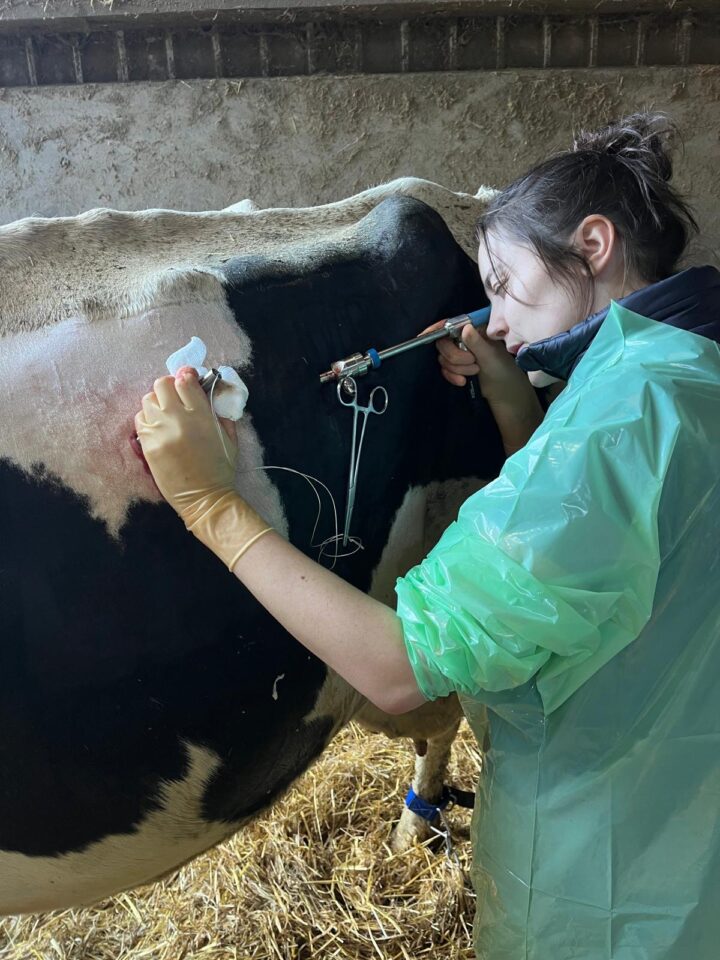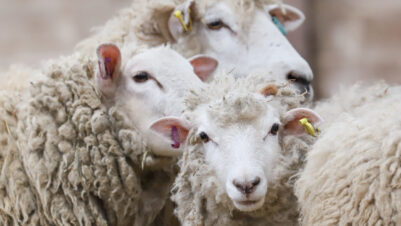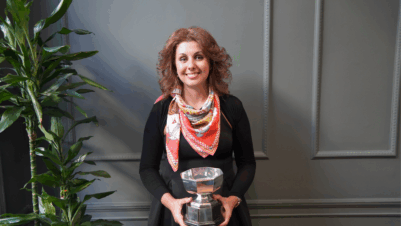
A Cumbrian veterinary practice is at the forefront of using cutting edge keyhole surgery in cattle.
Paragon Veterinary Group was one of the first in the country to embrace the innovative technique which involves using laparoscopy to repair cases of twisted stomachs or left displaced abomasa (LDA).
Paragon recently invested in its third laparoscope and now has eight farm vets trained to perform abdominal laparoscopic surgery in cattle.
Bruce Richards, a vet and Managing Director, said: “This development in cattle surgery is in line with advancing technology and techniques. It is keyhole surgery just like we see in humans.”
“The procedure is less invasive than traditional full surgery, there are fewer complications and there is minimal risk of surgical and abdominal infection, so the cow rarely needs preventative or post-surgical antibiotics. This helps to minimise antibiotic use and animals can continue to safely produce milk without the need to withhold it from sale.”
“Evidence suggests that cows have better recoveries,” said Bruce. “Generally, once a farmer sees it done and experiences the cow’s recovery, they tend to request it every time.”
More than 80 percent of the LDAs performed by the team at Paragon’s Dalston centre are now carried out using this technique and it is increasingly being used for additional abdominal investigative diagnostics.
Laparoscopy involves a camera which is inserted through a small hole a few centimetres long, in the cow’s flank. The vet can then insert guiding instruments through another small hole to complete the surgery. It is done under standing sedation and local anaesthesia, and the cow is left with two 1 to 2cm wounds, which are closed with staples. The procedure is generally no more expensive than traditional surgery.
Bovine laparoscopes are not standard equipment in veterinary practices because of the training required and equipment cost, making Paragon, which has centres at Dalston, Wetheral, Newbiggin near Penrith and Shap, stand out in Cumbria and embrace advanced techniques nationally.
“As a practice we encourage clinical development and feel if our team is interested in new diagnostics or treatment techniques, we should encourage that,” says Bruce. “It’s important to maintain that high standard of service and always aspire to best clinical practice.”
Karl Stephenson farms 350 dairy cows at High Pow farm at Bolton Low Houses near Wigton.
He said: “I always ask for keyhole surgery now. We have had it a few times and it is a lot less stress on the cow, and on the farmer.
“There’s usually no antibiotic use and I think the cow recovers a lot faster. Within 24 to 48 hours they are coming back to their normal selves and never look back. Whereas with the full surgery it can take up to four to five days.
“Also, you don’t have to keep their milk out of the tank which is a bonus.”






